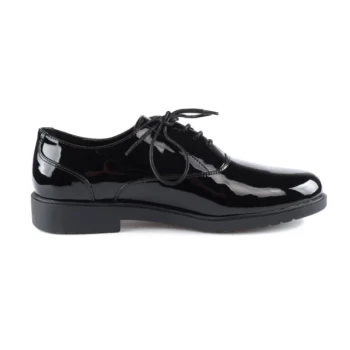Italian craftsmanship in casual dress shoes represents a blend of tradition, innovation, and uncompromising quality. Rooted in centuries-old shoemaking techniques, Italian artisans combine meticulous handwork with premium materials to create footwear that balances comfort, durability, and timeless style. The global reputation of Italian design elevates these shoes beyond mere functionality, making them symbols of refined taste and understated luxury. Brands like Tod's, Gucci, and Santoni exemplify this heritage, where even casual styles feature hand-stitched soles, supple leathers, and ergonomic lasts that adapt to the wearer's foot over time.
Key Points Explained:
-
Centuries-Old Artisan Tradition
- Italian shoemaking dates back to medieval guilds, with skills passed down through generations. Regions like the Marche and Tuscany remain hubs for small workshops where craftsmen hand-cut leathers and stitch soles using methods unchanged for decades.
- Example: Blake and Goodyear welting techniques ensure flexibility and water resistance in casual dress shoes, a hallmark of brands like Fratelli Rossetti.
-
Premium Material Selection
- Italian tanneries (e.g., Ponte a Egola) produce some of the world’s softest, most durable leathers, often vegetable-tanned for natural patina development. Suedes and calfskins are carefully matched for grain consistency.
- Non-leather materials (e.g., breathable cotton linings or rubber soles) are sourced for climate adaptability without sacrificing aesthetics.
-
Innovative-Design-Meets-Function
- Designers prioritize "sprezzatura" – effortless elegance – through subtle details: tonal stitching, unlined collars, or tapered lasts that flatter the foot’s shape.
- Features like cushioned insoles or lightweight soles (e.g., Tod's Gommino) bridge casual comfort with dress-shoe sophistication.
-
Cultural Influence on Global Trends
- Italian brands pioneered hybrid styles (e.g., horsebit loafers, suede chukkas) that redefine business-casual dress codes worldwide.
- The "Made in Italy" label conveys instant prestige, influencing mass-market brands to emulate Italian silhouettes and finishes.
-
Sustainability Through Craftsmanship
- Handmade construction reduces waste compared to automated production. Many workshops use leather offcuts for accessories or donate them to furniture makers.
- Longevity is built-in: recraftable soles and replaceable footbeds extend a shoe’s lifespan, aligning with slow-fashion values.
Have you considered how the ergonomic shaping of Italian lasts reduces break-in time while providing arch support? This subtle engineering, often overlooked, exemplifies the marriage of form and function that defines Italy’s shoemaking legacy. From cobblestone streets to boardrooms, these shoes carry a quiet confidence – one stitched at 300 stitches per inch.
Summary Table:
| Key Aspect | Why It Matters |
|---|---|
| Artisan Tradition | Centuries-old techniques ensure durability and precision in every stitch. |
| Premium Materials | Vegetable-tanned leathers and breathable linings offer comfort and longevity. |
| Innovative Design | Ergonomic lasts and hybrid styles blend sophistication with everyday wearability. |
| Global Influence | Italian designs set trends, making "Made in Italy" synonymous with luxury. |
| Sustainable Practices | Handmade construction reduces waste, and recraftable soles promote longevity. |
Elevate your footwear collection with the timeless elegance of Italian craftsmanship. As a large-scale manufacturer, 3515 produces premium casual dress shoes that embody these artisanal principles—perfect for distributors, brand owners, and bulk buyers seeking unmatched quality. Our extensive range includes hand-stitched soles, supple leathers, and ergonomic designs tailored for comfort and style. Contact us today to discuss how we can meet your sourcing needs with footwear that reflects Italy’s legendary shoemaking heritage.



















